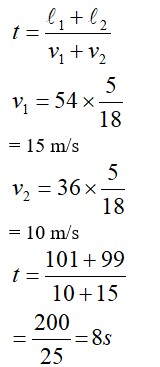A monkey climbs up a slippery pole for 3 seconds and subsequently slips for 3 seconds. Its velocity at time t is given by v(t) = 2t (3-t); 0< t < 3 and v (t)=–(t–3)(6–t) for 3 < t < 6 s in m/s. It repeats this cycle till it reaches the height of 20 m.
(a) At what time is its velocity maximum?
(b) At what time is its average velocity maximum?
(c) At what time is its acceleration maximum in magnitude?
(d) How many cycles (counting fractions) are required to reach the top?
A monkey climbs up a slippery pole for 3 seconds and subsequently slips for 3 seconds. Its velocity at time t is given by v(t) = 2t (3-t); 0< t < 3 and v (t)=–(t–3)(6–t) for 3 < t < 6 s in m/s. It repeats this cycle till it reaches the height of 20 m.
(a) At what time is its velocity maximum?
(b) At what time is its average velocity maximum?
(c) At what time is its acceleration maximum in magnitude?
(d) How many cycles (counting fractions) are required to reach the top?
-
1 Answer
-
This is a long answer type question as classified in NCERT Exemplar
(a) for maximum velocity dv/dt=0
d/dt (6t-2t2)=0
6-4t=0 t= 6/4=1.5s
(b) v=6t-2t2
ds/dt=6t-2t2
ds=6t-2t2dt
distance in 3s, S= 30
s= 27-18=9m
average velocity = distance /time =9/3 = 3m/s
x= 6t-2t2
3=6t-2t2
After solving we get t= 9/4s approx.
(c) in periodic motion when velocity is zero
0=6t-2t2
0=t (6-2t)
So t=0, 3 sec
(d) distance covered from 0 to 3s=9m
distance covered in 3 to 6s=
S= (18t- )6
S= 108-9 (18)+
S= -4.5m
So total distance covered = 9+ (-4.5)=4.5m
No of cycles covered in that distance =20/4.5=4.44approx
Similar Questions for you
Please find the solution below:
[h] = ML2T-1
[E] = ML2T-2
[V] = ML2T-2C-1
[P] = MLT-1
According to question, we can write
10 =
Average speed
(d) Initial velocity
Final velocity
Change in velocity
Momentum gain is along
Force experienced is along
Force experienced is in North-East direction.
Taking an Exam? Selecting a College?
Get authentic answers from experts, students and alumni that you won't find anywhere else
Sign Up on ShikshaOn Shiksha, get access to
- 66k Colleges
- 1.2k Exams
- 680k Reviews
- 1800k Answers



